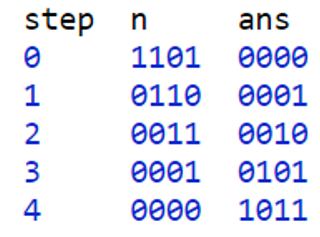LeetCode 190. Reverse Bits 解題紀錄
Contents
題目
Problem
Reverse bits of a given 32 bits unsigned integer.
Note:
- Note that in some languages, such as Java, there is no unsigned integer type. In this case, both input and output will be given as a signed integer type. They should not affect your implementation, as the integer’s internal binary representation is the same, whether it is signed or unsigned.
- In Java, the compiler represents the signed integers using
2's complement notation. Therefore, in Example 2 above, the input represents the signed integer-3and the output represents the signed integer-1073741825.
Example 1:
Input: n = 00000010100101000001111010011100
Output: 964176192 (00111001011110000010100101000000)
Explanation:
- The input binary string 00000010100101000001111010011100 represents the unsigned integer 43261596, so return 964176192 which its binary representation is 00111001011110000010100101000000.
Example 2:
Input: n = 11111111111111111111111111111101
Output: 3221225471 (10111111111111111111111111111111)
Explanation:
- The input binary string 11111111111111111111111111111101 represents the unsigned integer 4294967293, so return 3221225471 which its binary representation is 10111111111111111111111111111111.
Constraints:
The input must be a binary string of length 32
Follow up: If this function is called many times, how would you optimize it?
想法
使用的是 uint32_t 這個 type
解法
解法一
宣告一個 bitset,逐一做 bit swap

class Solution {
public:
uint32_t reverseBits(uint32_t n) {
bitset<32> bit(n);
for(auto i=0; i<16; i++)
{
bit[i] = bit[31-i] ^ bit[i];
bit[31-i] = bit[31-i] ^ bit[i];
bit[i] = bit[31-i] ^ bit[i];
}
return (uint32_t) bit.to_ulong();
}
};
- Time complexity: $\mathcal{O}(n)$.
- Space complexity: $\mathcal{O}(1)$.
解法二
使用 count 1s 的方法,檢查是否為 1。

class Solution {
public:
uint32_t reverseBits(uint32_t n) {
uint32_t ans = 0;
for(auto i=0; i<32; i++)
{
ans = (ans<<1) | ((n>>i)&1);
}
return ans;
}
};
- Time complexity: $\mathcal{O}(n)$.
- Space complexity: $\mathcal{O}(1)$.